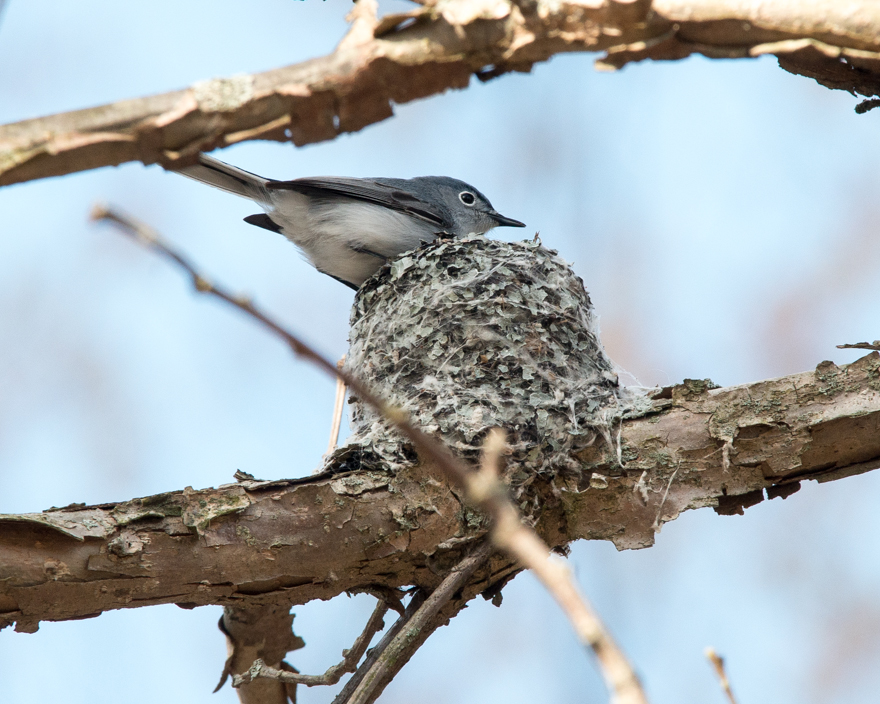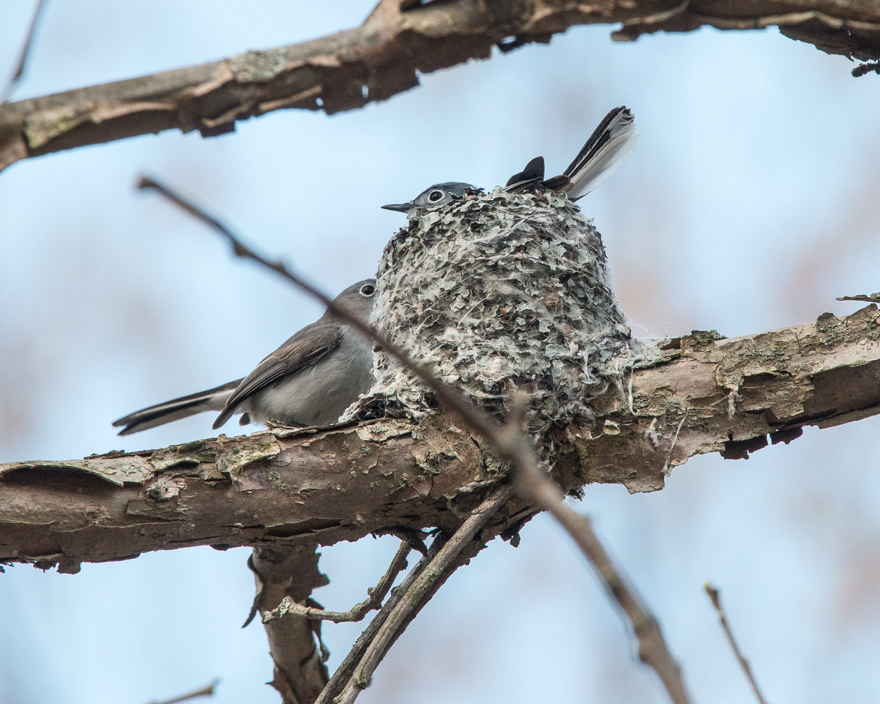This is a blue-gray gnatcatcher.

And here’s a recording of his call notes:
There’s a robin singing in the background; the gnatcatcher’s vocalizations are the worried-sounding scolds.
So he’s not the fanciest or most attention-getting bird around. He weighs around 6 grams, hangs out in treetops, moving constantly, and can’t sing worth a damn (from a biased, robin-centric standpoint), but he’s actually a fairly common bird. Once you tune in to his vocalizations, you start to notice gnatcatchers all around, especially in wet woods. Since this spring’s migration started in earnest a couple of weeks ago, I scarcely remember a walk we’ve taken when I haven’t heard at least one gnatcatcher.
The problem is that, until recently, I had no idea that they existed. I mean, I was aware of a gnatcatcher page in the Sibley Guide to Birds, but it was a peripheral and strictly theoretical awareness. Then one spring, fewer years ago than I’d like to admit, a birder mentioned that the migrating gnatcatchers had recently arrived, and I decided to see if I could find this exotic-seeming creature for myself. I went to Fowl Meadow in the Blue Hills Reservation, where the gnatcatcher had been reported, and sure enough — there was the bird. I was very proud of myself for a minute, and then I started hearing* them all over, like a newly-learned word that suddenly shows up everywhere. I think of myself as being fairly attuned to the natural world, so learning that I had been completely deaf to a locally common bird was revealing. I half-expected someone to tell me that white pine woods are full of koala bears, if you just stop to look carefully. What else was I missing?
The answer, of course, is A Great Deal. While this episode may represent a high-water mark of cluelessness for me, I’m grateful for the complexity in my local patches of woods and meadow. I’m a homebody, and the prospect of a lifetime of exploration available to me within a few miles of my house is pretty exciting. I’m not especially curious about the birds I might be able to see in Panama (compelling evidence to some that I am a bore), since I doubt that I’d ever spend enough time there to really understand the stories. But here, I have a chance. Even something as simple as learning that gnatcatchers build their nests from bits of lichen, held together with spider silk, gives me great pleasure. It explains why they set up housekeeping at the edge of a red maple swamp, where there are lots of lichen-covered trunks nearby. My next project will be to try to figure out which spiders are donating the silk.

_________________
* I tend to hear many more birds than I see. My visual acuity is not spectacular, but then, after years of working with power tools, my hearing is probably not dog-sharp either. But somehow, birdsong leaps out at me with a legibility that I find hard to ignore, perhaps because I sang and studied voice for a number of years when I was younger. Everything has a dark side, though. Two summers ago, a resident mockingbird in my back yard decided that 2am was an optimal time to sing his declarations of love and territorial challenge. He would tee up in the cherry snag outside my bedroom window and run through his repertoire, sometimes for an hour or more. As I tried to fall back asleep, I would unconsciously find myself identifying the source of each of the mocker’s songs — titmouse, robin, kildeer, blue jay, robin again — utterly unable to ignore his singing mimicry.
Tagged: bird, Blue Hills Reservation, Blue-gray gnatcatcher, breeding, Fowl Meadow, lichen, nest, spring